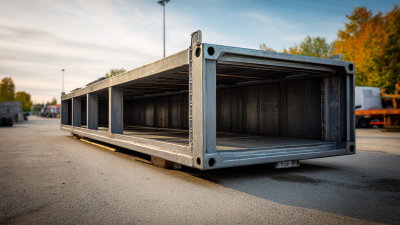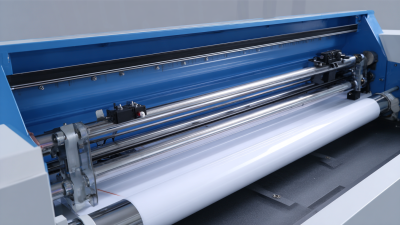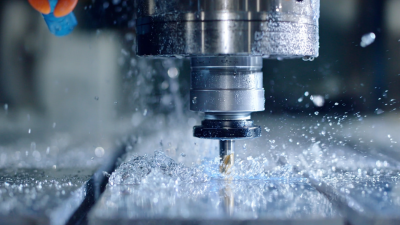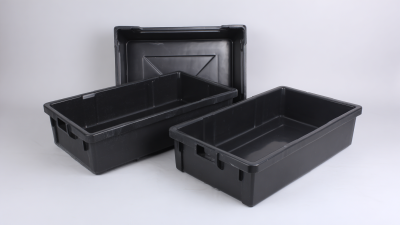10 Essential Tips for Sourcing the Best Plastic Drip Tray for Your Business Needs
In today’s fast-paced business environment, the efficient management of resources is crucial, and the choice of equipment can significantly impact operational success. The plastic drip tray, an essential component in various industries such as food service, automotive, and agriculture, plays a vital role in preventing spills and maintaining cleanliness. According to industry reports, the global plastic drip tray market is projected to reach $2.5 billion by 2025, driven by the increasing demand for hygiene and spill prevention measures. As businesses strive for sustainability and cost-effectiveness, selecting the right plastic drip tray becomes imperative. This blog will provide you with 10 essential tips for sourcing the best plastic drip tray tailored to your specific business needs, ensuring you make informed decisions that enhance both functionality and efficiency.

Understanding the Different Types of Plastic Drip Trays Available in the Market
When sourcing the best plastic drip trays for your business needs, understanding the different types available in the market is crucial. Plastic drip trays typically come in various materials, each with distinct properties suited for different applications. For example, trays made from high-density polyethylene (HDPE) are known for their strength and resistance to impact, making them ideal for industrial settings where durability is paramount. According to a report by the Plastics Industry Association, the demand for HDPE products is projected to grow by 4.5% annually, reflecting its increasing use across various sectors.
Additionally, companies can choose from trays designed for specific functions, such as spill containment or fluid collection. Some trays even incorporate features like built-in handles for easier transport or multi-compartment designs for organized storage. The global market for plastic trays is expected to reach USD 11.5 billion by 2026, with a significant share attributed to the rising need for efficient waste management solutions in both commercial and residential environments. By understanding the unique characteristics of each type of plastic drip tray, businesses can make informed decisions that align with their operational requirements and contribute to sustainability goals.
10 Essential Tips for Sourcing the Best Plastic Drip Tray for Your Business Needs
| Type of Plastic Drip Tray | Material | Capacity (Liters) | Dimensions (cm) | Ideal Use |
|---|---|---|---|---|
| Standard Drip Tray | Polypropylene | 10 | 50 x 30 x 5 | Home Appliances |
| High-Capacity Drip Tray | Polyethylene | 20 | 70 x 50 x 10 | Industrial Use |
| Custom-Shaped Drip Tray | PVC | 15 | 60 x 40 x 8 | Automotive |
| Eco-Friendly Drip Tray | Biodegradable Plastic | 5 | 40 x 30 x 4 | Gardening |
| Small Drip Tray | Acrylic | 2 | 25 x 20 x 3 | Food Service |
Key Features to Look for in a High-Quality Plastic Drip Tray
When sourcing a high-quality plastic drip tray for your business, it's crucial to focus on key features that will enhance functionality and durability. First and foremost, consider the material thickness; thicker plastics typically offer greater resistance to wear and tear. Look for trays made from high-density polyethylene (HDPE) or polypropylene, as these materials are known for their robust performance and resistance to chemicals. Additionally, UV resistance is an important factor, especially if the trays will be placed outdoors or in direct sunlight, as this will prevent degradation over time.
Another essential feature to keep in mind is the design of the tray. A well-designed drip tray should have raised edges to contain spills effectively, and drainage holes to facilitate easy cleaning and prevent water accumulation. It's also beneficial to choose trays with anti-slip properties, ensuring that items placed upon them stay secure. Furthermore, consider the size and capacity in relation to your specific needs—whether for gardening, industrial applications, or pet care—ensuring that the tray can accommodate your products without overflow. By prioritizing these essential features, you can find a plastic drip tray that meets the demands of your business while ensuring longevity and reliability.
Plastic Drip Tray Key Features Comparison
Sizing Your Plastic Drip Tray: Finding the Perfect Fit for Your Business
When it comes to sourcing the best plastic drip tray for your business needs, sizing is critical. According to a report by the American Society for Testing and Materials (ASTM), improper sizing accounts for up to 30% of inefficiencies in industrial operations. This highlights the importance of selecting a drip tray that perfectly fits your application, whether it’s for automotive repair, food processing, or another sector.
When determining the right size for your plastic drip tray, consider the types of fluids it will contain and the volume of leakage you anticipate. A common tip is to measure the footprint of the area where the tray will be placed, ensuring it can accommodate any equipment or machinery. Additionally, always opt for trays that offer sufficient depth to contain potential spills without overflowing, as industry studies suggest using a tray with at least 20% extra capacity for enhanced safety.
Look for trays with integrated features such as raised edges and grates, which can both enhance containment and facilitate drainage. According to a market analysis by IBISWorld, the demand for innovative designs in plastic trays is growing by 15% annually, indicating that businesses are increasingly prioritizing functionality along with size in their purchasing decisions.

Assessing Durability: Materials and Design for Long-Lasting Use
When sourcing plastic drip trays for your business, it's critical to assess their durability based on materials and design. According to a recent industry report by Smithers Pira, plastic products can account for around 20% of total waste in businesses, making the choice of high-durability materials essential. Polypropylene and polyethylene are often recommended for their resistance to impacts, chemicals, and temperature variations, which can ensure a longer lifespan for your drip trays. These materials can withstand the rigors of daily use in industrial and commercial settings, thus reducing the need for frequent replacements and leading to cost savings over time.
Moreover, the design of the drip tray plays a pivotal role in its durability. Trays that incorporate reinforced edges and a thicker base not only resist bending under load but also prevent cracks that can lead to spills or contamination. According to a 2022 market analysis by Freedonia Group, products designed with enhanced structural features saw a 30% increase in customer satisfaction due to their longevity and performance. Selecting drip trays that prioritize durable materials and intelligent design will contribute significantly to operational efficiency and reliability in your workflow.
Cost-Effectiveness: Evaluating Price vs. Quality for Your Drip Tray Needs
When sourcing plastic drip trays for your business, the cost-effectiveness of your selection should be a primary consideration. While it's tempting to go for the cheapest option available, it’s crucial to evaluate how price influences quality and durability. Cheap trays may save you money upfront, but they often lead to higher replacement costs and potential losses if they fail to perform adequately in high-volume environments. Therefore, striking the right balance between price and quality is essential for making a wise investment.
To effectively assess your options, look beyond initial costs and consider the long-term benefits of higher-quality trays. A well-made plastic drip tray might have a higher price tag but can offer superior resistance to wear, chemical exposure, and environmental factors. This durability not only extends the product's lifespan but also minimizes the risk of leaks and spills, ultimately protecting your business's reputation and bottom line. Investing in quality ensures that you are not just buying a product, but securing peace of mind for your operations.

Related Posts
-

Transforming Efficiency in 2025 with the Best Large Drain Pan Innovation and Its Benefits
-

Ultimate Guide to Choosing the Best Spill Tray for Chemicals Based on Your Needs
-

How to Choose the Best Vacuum Forming Machine for Your Business Needs
-

Exploring the Future of CNC Machines in 2025 and Their Unmatched Advantages for Global Buyers
-

Unmatched Quality in Plastic Spill Trays from China Leading the Global Market
-

The Future of Sustainable Versatile Solutions with the Best Large Drip Pan in Global Markets